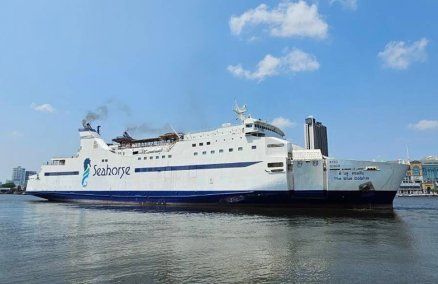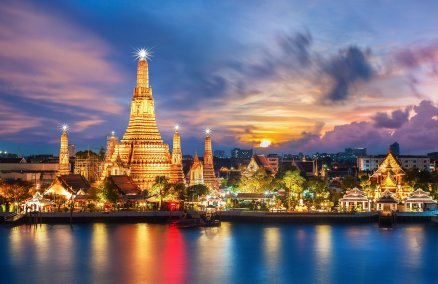PRANBURI
Walking Street at the 200-year-old market
217km/3 hrs
Open Saturday, 4.30pm-9.30pm
Not only does Pranburi have serene beaches and a lush national park, the province is home to an old town with a market aged over 200 years old. Around since the Ayutthaya era, Pranburi was once a commercial hub in the area following the railway line expansion through the province in 1905. The new roads and developments in the area 30 years ago, though, drew a large number of residents away from the old town, leaving the area quieter. And just about five years ago the market was revitalized by a group of locals hoping to preserve the traditional way of life. They opened the walking street along the well-maintained old-style shophouses to visitors on Saturday evenings. Situated behind the Pranburi train station, the walking street (tinyurl.com/qymy7qf) houses several shops and stalls selling handmade products and traditional food and desserts.
Highlights: For street stalls, look for rice in lotus leaf and somtam boran, which are hard to find these days. The two must-visit shops in the walking street are Prod Pran coffee shop (087-908-9080) and souvenir shop Baan Ama (tinyurl.com/nmwy33e), both decorated with retro items, offering good photo opportunities and they are just a short distance from each other.
Bonus: The market is in fact quite close to Pak Nam Pran, a 20-minute drive from Hua Hin town. The beach in Pak Nam Pran is beautiful and quiet offering a good spot to chill by the sea before heading to the market in the evening. You can also rent a bike from one of the beachfront resorts and explore the temples, waterfalls, caves, pineapple plantations, fishing villages along the beachfront road. For more information, call TAT Prachuap Khiri Khan at 032-513-854, 032-513-871.
SUPHANBURI
Samchuk
140 km/2 hrs
Open daily, around 8am-5pm
Set on the banks of the Ta Chin River, Samchuk is one of the country’s most famous and authentic markets. The riverside site has been a trading spot for people living along the Ta Chin since the 18-19th centuries before roads made river travel obsolete. But in 2000, the community gathered and decided to revitalize the old market while preserving its original atmosphere. It turned out to be Samchuk’s largest development plan, taking nine years to complete. The market is now an award-winning example of old market revitalization that’s been copied by numerous markets across the country.
Highlights: Visit Khun Chamnong Jeenaruk Musuem to learn the history of the market through the lifestyle of a local noble who lived during the 1910-70s, before getting some black coffee at Raan Cafe Ta Ruea Song next to the entrance from the pier. Slightly odder is Baan Coke, a mini Coca-Cola museum displaying a vast collection of Coke-related products ranging from glasses to vintage ads. As for food, the old market serves up a variety of fare but you should try the noodles with supersized fish balls.
Bonus: A few more minutes of driving takes you to Buffalo Villages (www.buffalovillages.com) where you can check out the life of this animal beloved to Thai farmers. Travel further into Singaburi province, which is even closer than Amphur Muang, for the famous Mae La pla pao (grilled snake fish) places along Mae La River and one of Thailand’s largest reclining Buddha statues at Wat Phra Non Chaksi.
Kao Hong
97 km/1.30 hr
Open daily 8am-5pm
If Samchuk is packed with hungry weekenders, Kao Hong is its quiet counterpart. Started with nine shophouses built by a Thai-Chinese rice tycoon as his trading headquarters on the banks of the Ta Chin River, the market was later expanded to three times the size and roughly divided into three zones: central, lower and the upper markets, where the rows of wooden shophouses are.
Highlights: We can guarantee veteran photographers and precious posers alike will fall prey to the old buildings’ charms, as there are numerous spots with an opportunity for good photos. Shop houses decked out with vintage furniture are also open for photo shoots for free—they don’t even care if you shop or not. Why so relaxed you ask? Because the rental fee is so cheap, locals tell us. At the center of the market there’s a four-story tower that locals would use as a fort to watch out for intruders in the old days.
Bonus: As the location is not far from Suphanburi town center, this is a chance to explore one of Thailand’s cleanest and tidiest cities with tourist landmarks like the Banharn-Chamsai Tower where you can get the elevated panorama of the entire city and the Dragon Descendants Museum (Open Wed-Mon, 10am-4pm. Entry B299 for Thais, B499 for foreigners) where you can explore the long history of Chinese families and communities in Thailand.
RATCHABURI
Chet Samian
92 km/1.30 hr
Open Fri-Sun, 3-7pm. Art performances every last weekend.
These past couple of years, the status of the Chet Samian community and its local market have been elevated to a truly “cool” old market destination easily reached from Bangkok. It’s mostly thanks to the promotion of Patravadi Theatre’s Suan Silp Baan Din project and its founder, the Silpathorn award-winning Manop Meejamras, whose family is originally from this district. Compared to other markets, Chet Samien is really tiny: there are around 20 shophouses facing each other on the street that leads to the river. The super quiet market on weekdays turns into a bustling market every Sat-Sun with the influx of Bangkokians, and the last weekend of every month, sees performaces from Suan Silp Baan Din.
Highlights: They have this amazing chicken that they bake in a jar over burning coal, so that the chicken has a delicious smoky flavor. But the true highlights are art performances curated by Manop Meejamras. For your first visit, drop by at Chet Samian Local Museum for a collection of old photos and artifacts covering the history of the community before strolling around the stalls and shophouses. A small riverside stage sits at the end of the market’s street. This is not only where you watch all the performances but it’s also a spot to enjoy a beautiful sunset.
Bonus: As Chet Samian is located in Potharam district, a walk around Potharam Market (15km away) will complete your vintage Ratchaburi itinerary. Around five time larger than Chet Samian, Potharam Market features restaurants, old movie theatres, galleries and Chinese temples.
SAMUT PRAKARN
Khlong Suan
80 km/1 hour
Open daily, around 8am-5pm
Just 30 minutes away by motorway (exit at Ladkrabang), this place is a foodie paradise within reach of urban mortals. From the entrance, Khlong Suan is packed with food stalls selling every old recipe under the Siamese sun, like the rare kanom dok jok, a fried dessert in the shape of flower. Situated on Pravetburirom canal, this old community harking back to the King Rama V era used to be the top shopping spot for people who traveled along the canal linking Bangkok and Chacherngsao. Though it’s divided along provincial lines—Samut Prakarn and Chacherngsao—Khlong Suan is famous for its laid back living, harmonious Chinese and Muslim communities and great coffee shops.
Highlight: Funny how places with good quality of life always have the best coffee shops. The must-visit is Pae Li. This coffee house is particularly popular for its grandpa, who has appeared in every media outlet out there. Even though he’s in his 80s, he still serves every drink and smiles to any camera approaching him.
Bonus: Along the way to Khlong Suan, you will pass stalls selling the famous pla salid (deep fried fish) from Bang Bor which is the best and the biggest pla salid-producing area in Thailand.
CHACHERNGSAO
Ban Mai
80 km/1.30 hour
Open daily, 8am-5pm (some shops only open on weekends)
Banmai Market, in Chacherngsao harks back to Rama 4. The market was created by Chinese immigrants who built their homes along the Bangpakong (Ta Chin) River long ago, and it slowly became the economic hub of Chacherngsao. It remains famous to this day, having served as a location for TV series and movies such as Yoo Gab Gong and Nang Nak.
Highlight: You can’t miss Ban Pa Nu, a riverside restaurant in Ban Mai, which specializes in pla chon lui suan and tom yam goong mae nam with ingredients coming from the Bangpakong river. For desert, venture over to Mae Wong’s for their stellar lod chong.
Bonus: Don’t forget to pay respect to the Luang Por Sothorn Buddha statue, legendary cousin of Luang Por To in Sumut Prakarn. You can also cruise along Bangpakong River to see the riverside communities. To visit these destinations, catch the boat from Luang Por Sothorn Temple to the Banmai market B100.















